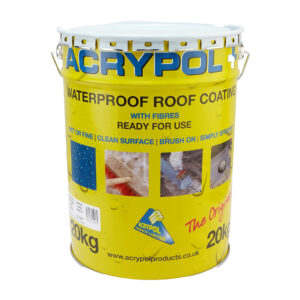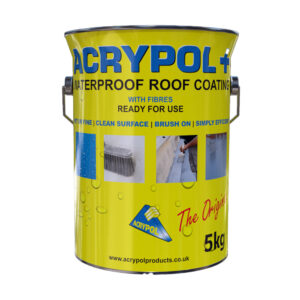Acrylic waterproof coating Acrypol stops leaks quickly on your roof with its resin-based acrylic properties. It’s a great roofing sealant that thousands of roofers and DIYers have trusted across Britain for its quality fibre-based elements that help seal leaky roofs. In this short guide, we’ll look at how to apply Acrypol safely on a roof.
Preparing the Surface
Before applying Acrypol, you must first assure that the surface is clean of any dirt, contaminations, moss or standing water. This will help apply the paint efficiently and ensure that the roof coating seals the crack more efficiently. Moreover, we’d recommend keeping the key surface area which is to be painted dry.
Applying Acrypol on a Roof
To apply Acrypol, we recommend using a 4-inch brush which will have to be thrown away after using Acrypol. While a roller can also be used, we’d stick with the paint brush due to the thickness of the roof paint. Acrypol can be applied like general paint and in one coat. Remember, it can take 2 to 3 days to dry, depending on the weather conditions.
Can Acrypol be applied in rain or wet weather?
For those who cannot avoid damp weather especially during rainy spells, Acrypol is the perfect product. It can be applied in humid conditions giving your roof a fibre-reinforced application.
Should you use other sealants or primers with Acrypol?
Generally, you don’t need to use extra roof sealants or primers with Acrypol. However, if you do, we’d recommend speaking to a roofer or our support team to discuss your requirements.
What kinds of roofs and surfaces can I use Acrypol on?
Acrypol can be used on flat roofs, pitched roofs, asphalt, bituminous surfaces, roofing felt, gutters, leadwork, slates, flashings, glasshouses, metals, concrete, brickwork, roof lights, and PVC.







